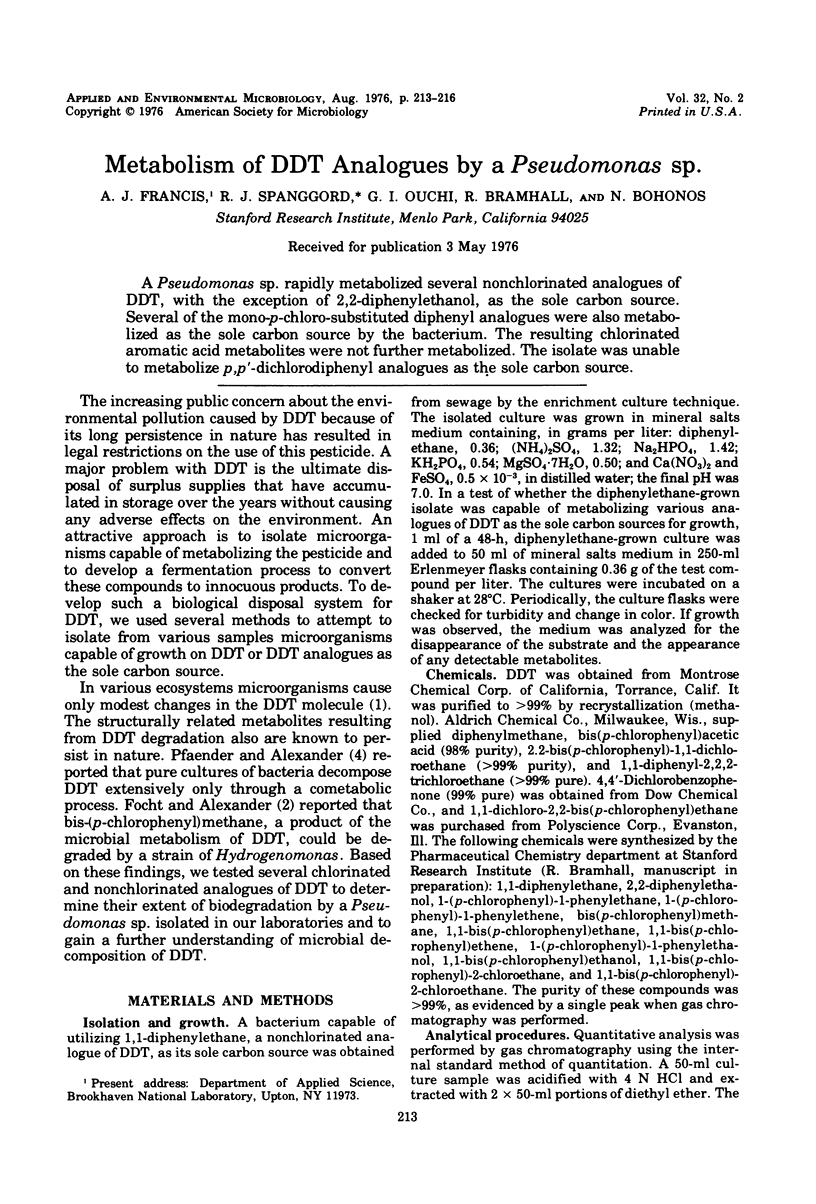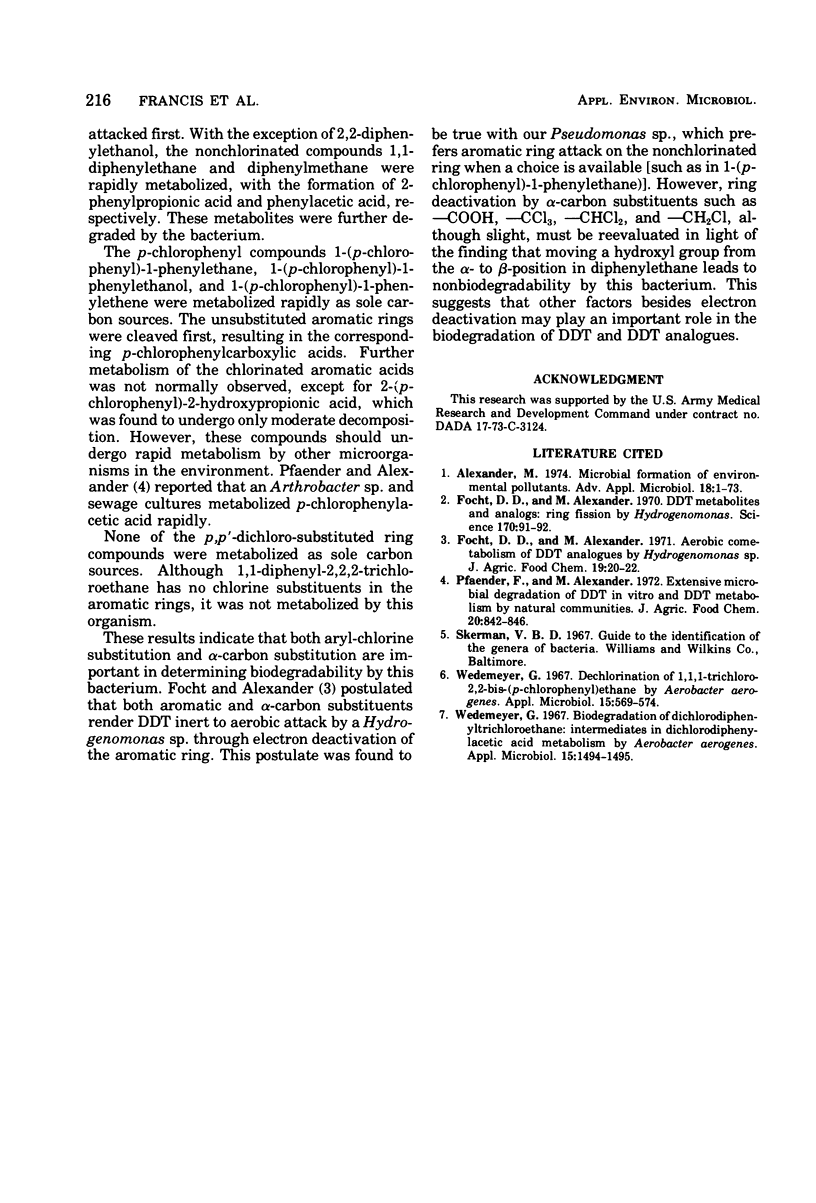Abstract
A Pseudomonas sp. rapidly metabolized several nonchlorinated analogues of DDT, with the exception of 2,2-diphenylethanol, as the sole carbon source. Several of the mono-p-chloro-substituted diphenyl analogues were also metabolized as the sole carbon source by the bacterium. The resulting chlorinated aromatic acid metabolites were not further metabolized. The isolate was unable to metabolize p,p'-dichlorodiphenyl analogues as the sole carbon source.
Full text
PDF



Selected References
These references are in PubMed. This may not be the complete list of references from this article.
- Alexander M. Microbial formation of environmental pollutants. Adv Appl Microbiol. 1974;18(0):1–73. doi: 10.1016/s0065-2164(08)70569-0. [DOI] [PubMed] [Google Scholar]
- Focht D. D., Alexander M. Aerobic cometabolism of DDT analogues by Hydrogenomonas sp. J Agric Food Chem. 1971 Jan-Feb;19(1):20–22. doi: 10.1021/jf60173a042. [DOI] [PubMed] [Google Scholar]
- Focht D. D., Alexander M. DDT metabolites and analogs: ring fission by Hydrogenomonas. Science. 1970 Oct 2;170(3953):91–92. doi: 10.1126/science.170.3953.91. [DOI] [PubMed] [Google Scholar]
- Pfaender F. K., Alexander M. Extensive microbial degradation of DDT in vitro and DDT metabolism by natural communities. J Agric Food Chem. 1972 Jul-Aug;20(4):842–846. doi: 10.1021/jf60182a045. [DOI] [PubMed] [Google Scholar]
- Wedemeyer G. Biodegradation of Dichlorodiphenyltrichloroethane: Intermediates in Dichlorodiphenylacetic Acid Metabolism by Aerobacter aerogenes. Appl Microbiol. 1967 Nov;15(6):1494–1495. doi: 10.1128/am.15.6.1494-1495.1967. [DOI] [PMC free article] [PubMed] [Google Scholar]
- Wedemeyer G. Dechlorination of 1,1,1-trichloro-2,2-bis(p-chlorophenyl)ethane by Aerobacter aerogenes. I. Metabolic products. Appl Microbiol. 1967 May;15(3):569–574. doi: 10.1128/am.15.3.569-574.1967. [DOI] [PMC free article] [PubMed] [Google Scholar]


